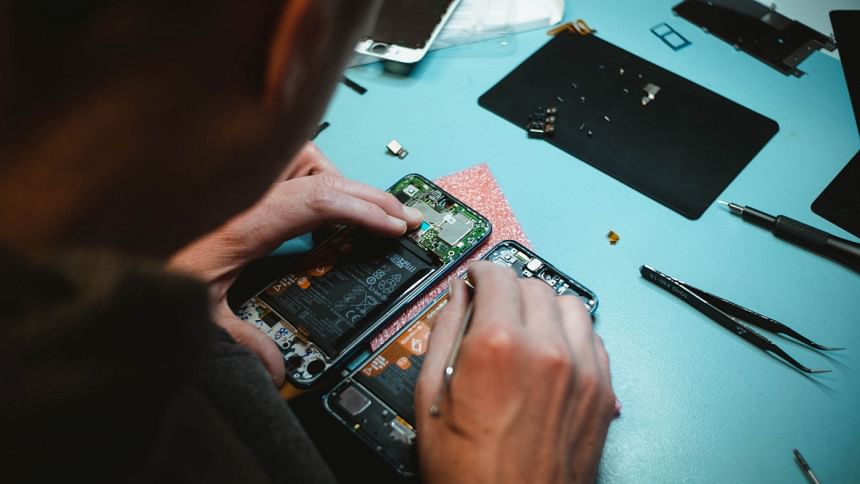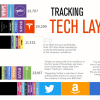The 'right-to-repair' movement, explained

Imagine purchasing a sleek new phone a few years ago, expecting it to be your reliable companion for an extended period. However, it's currently grappling with staying charged, and obtaining a new battery seems nearly impossible. Instead of relishing the freedom of your phone, you find yourself constantly tethered to a wired charger. Oddly enough, everything else functions perfectly; it's just this vexing battery issue.
This narrative of tech woes isn't an isolated incident. It's a collective predicament, whether you're contending with a phone, a laptop, or even a car. In recent years, an increasing number of consumers have encountered frustration due to limited repair options for their electronic devices, sparking a global movement known as 'right-to-repair'. This movement contends that individuals should have the autonomy to repair their products or choose their preferred technician. Let's take a deeper look into this unique global movement and what it entails.
What is 'right-to-repair'?
The 'right-to-repair' movement states that individuals should have the ability to repair their products independently or select a specialised technician for the task. Commonly applied to older cars and appliances, this principle is advocated by those who argue that modern technology, particularly items with computer chips, poses challenges for self-repair.
In Bangladesh, Section 29(1) of the Patents and Designs Act (PDA) of 1911, empowers patent holders to take legal action against individuals involved in unauthorised making, selling, or using patented inventions. This provision potentially bars third parties from selling spare parts without obtaining a licence.
Consequently, manufacturers can dictate who sells their products, limiting consumer options and sometimes making repair impossible by withholding necessary parts. The interplay of these legal aspects highlights the challenges faced by the right-to-repair movement in ensuring broader access and more repair-friendly practices. The movement seeks to address these barriers and ensure individuals have the means to repair their belongings.
How did it start?
The right-to-repair movement originated from challenges individuals faced when repairing their devices due to restrictions imposed by manufacturers. Companies like Apple, Tesla, Meta, and Google employ patents and proprietary measures that limit access to essential repair information and tools.
Most corporations aim to block repair by making new devices challenging to repair, particularly by third-party repairs. For example, repairing Apple's new iPhone 13 without going to an authorised store is nearly impossible. Tech corporations exert control by making products obsolete over time, forcing consumers to buy newer models. They also authorise only selected repair shops to have their products, restricting availability in the free market.
However, the problem lies in national intellectual property (IP) rights legislation, including Bangladesh, allowing these monopolistic processes. The most common IP right linked to the right to repair (R2R) is patented. Through patenting spare parts, companies make it almost impossible for third-party repairers and consumers to repair a product without violating relevant laws. Repair may also lead to trademark infringement when third-party repairers use the product through unauthorised means or modify the trademarked product, complicating matters under Section 26(5) of the Trademark Act, 2009.
In response, a movement advocating for the right to repair has emerged, aiming to reform laws and practices to make repair more accessible to individuals and third-party repair services.
How is it going to impact the tech industry?
The right-to-repair movement is reshaping the tech industry by advocating for legislative changes that mandate manufacturers to provide spare parts, tools, and repair information to the public. This shift is driven by environmental concerns, promoting device repairability to reduce electronic waste. It influences market competition by challenging design practices like parts pairing and pushing for more modular and repair-friendly designs. Consumers stand to benefit from increased choices, cost savings, and a competitive repair market.
Some tech giants, including Apple, have shown a willingness to adapt to the changing landscape, as evidenced by Apple's support for the Right to Repair Act in California, suggesting a recognition of evolving consumer expectations. However, the industry may experience a delicate balance as companies navigate the tension between supporting repair initiatives and maintaining control over their intellectual property. Overall, the movement is driving a significant paradigm shift in how technology is produced, consumed, and sustained.
Where is it currently being implemented?
Device makers shifted their stance, initiating programs to endorse independent repair. In spring 2022, Apple launched a self-repair program, and Samsung and Google partnered with iFixit for repair promotion. Microsoft, influenced by shareholders, emphasised the environmental benefits of repair in a study. Advocates interpret this shift as tech giants recognising the necessity to be more repair-friendly to shape future regulations.
California's new right-to-repair law, along with similar legislation in Minnesota and New York, signifies a changing perspective on repair in both the public and corporate realms. These laws aim to counteract the environmental impact of a disposable culture by ensuring that repairing many devices is, at least theoretically, possible.
In August, the EU introduced a groundbreaking "ecodesign" regulation for smartphones and tablets. By June 2025, manufacturers of these devices must adhere to strict durability and repairability standards, providing spare parts and repair information for a minimum of seven years.
With more states enacting their laws, support for a national right to repair is gaining momentum. At an October White House event, the Biden administration and Apple's vice president, Brian Naumann, urged Congress to pass a national right-to-repair law, modelled after California's bill.
The right-to-repair movement, advocating for consumers' ability to fix and modify their own electronic devices, has the potential to democratise technology and challenge the prevailing culture of planned obsolescence. As it gains momentum, this movement could foster a more sustainable tech industry, shifting the balance of power towards consumers and encouraging innovation that prioritises longevity and environmental responsibility.

 For all latest news, follow The Daily Star's Google News channel.
For all latest news, follow The Daily Star's Google News channel. 







Comments